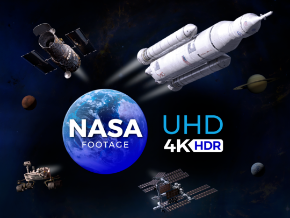

You can also watch it on the NASA TV YouTube channel, on, or on CNET Highlights.Įarly in the feed, you’ll be seeing space, so it will appear black.
NASA TV LIVE WEBCAST PLUS
Actual scenes of the DART collision with Dimorphos are expected at 7:14 p.m. NASA Plus is a new subscription-free streaming service that will have original shows, mission archives, livestreams for Artemis II, and more.

Dont miss the NASA EDGE team and the Sun-Earth Day team as they bring you this last of a lifetime event live from the top of Mount Mauna Kea, Hawaii, through our partnership with the University of Hawaii Institute for Astronomy. Watch live broadcasts from NASA Television and NASAs social media channels, and a schedule of upcoming live events including news briefings, launches and.

NASA TV LIVE WEBCAST WINDOWS
NASA TV will start a live broadcast at 6 p.m. NASA EDGE Mauna Kea, Hawaii This is the Official Sun-Earth Day webcast for the Transit of Venus. Astronaut Don Pettit onboard the International Space Station (ISS) discusses the scientific and historical aspects of the JTransit of Venus across the Sun and his plans for photographing the event through some of the optical quality windows onboard the ISS including Cupola Window 1, the port forward. LIVE Coverage of the Launch of the Northrop Grumman SS Laurel Clark CRS-19. Meanwhile, the mission’s main camera, the onboard Didymos Reconnaissance and Asteroid Camera for Optical navigation (DRACO), will transmit images back to Earth, taking one photo every second until DART is obliterated on the asteroid.Īfter the mission is complete-and we say goodbye to DART-ground-based space telescopes will check Dimorphos’ orbit for changes. Schaue dir NASA TV in livestream bei Zattoo. A Newly Discovered Asteroid Shares Earth's Orbit.If Jupiter’s Orbit Shifts, Earth Could Be Paradise.This Engine Could One Day Avert a Planetary Crisis.It will also eject a small satellite shortly before impact that will continue to take pictures. “That’s not very fast, but if you do it enough seconds in advance, you can cause it to miss the Earth entirely,” according to the mission overview by Johns Hopkins University’s Applied Physics Laboratory.ĭART will dive into the moonlet at 14,000 miles per hour while broadcasting data and undoubtedly dramatic photos of the event. Mission engineers hope to alter the speed of incoming objects by a centimeter per second. So, DART’s goal is to collect as much data as possible during the test. While Dimorphos is about one-and-a-half times the size of a football field, this test is a dress rehearsal for the really “ big one” that could potentially smash into Earth someday. ☄️ New technologies for the future are amazing. Launched on November 24 last year, NASA’s Double Asteroid Redirection Test (DART) is due to plow into a rocky asteroid moonlet called Dimorphos on Monday in an attempt to alter its orbit around the larger asteroid Didymos about seven million miles away from Earth.
NASA TV LIVE WEBCAST HOW TO
NASA and other space agencies will collect valuable data from it to learn how to deflect even bigger asteroids in the future.


 0 kommentar(er)
0 kommentar(er)
